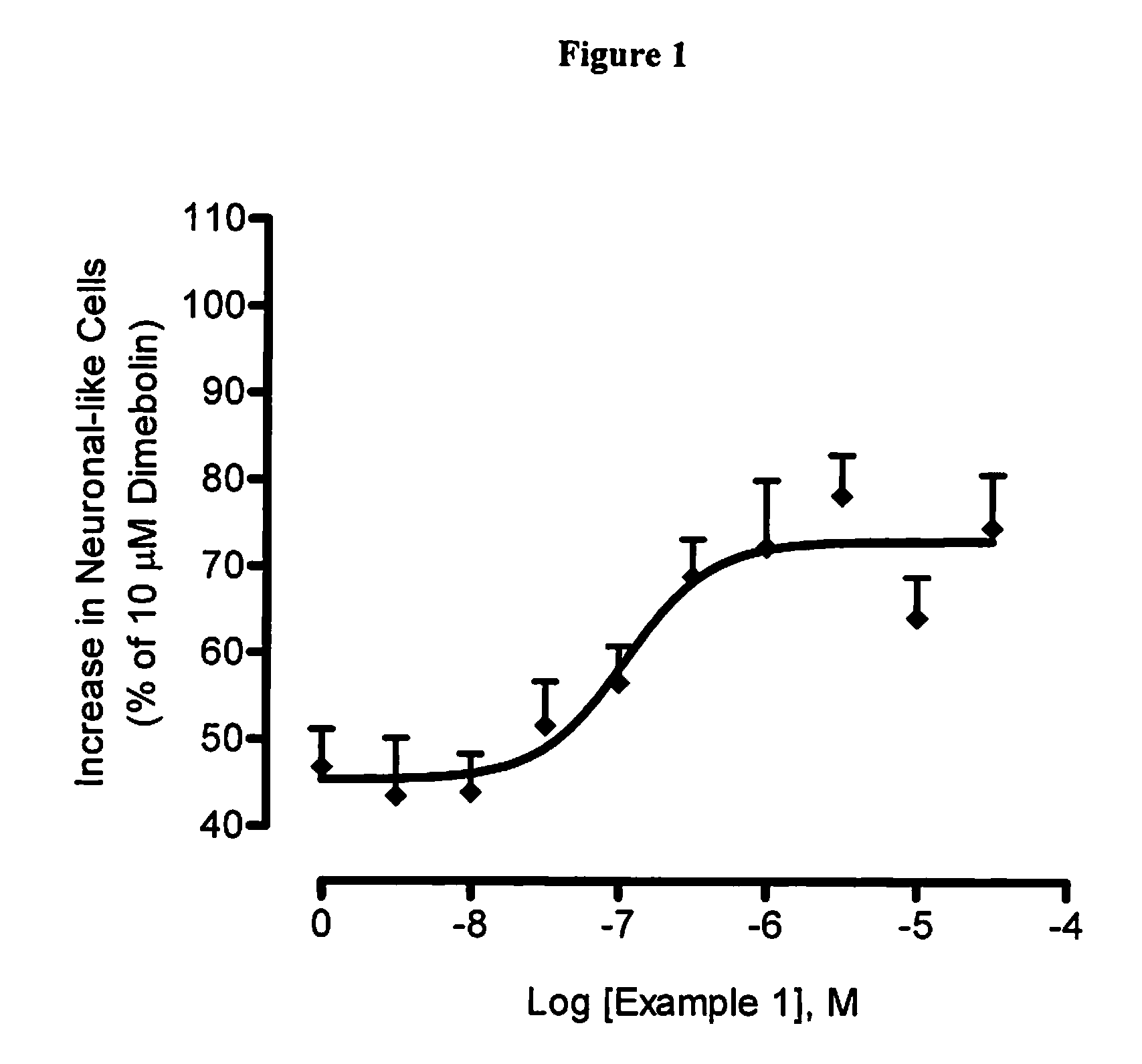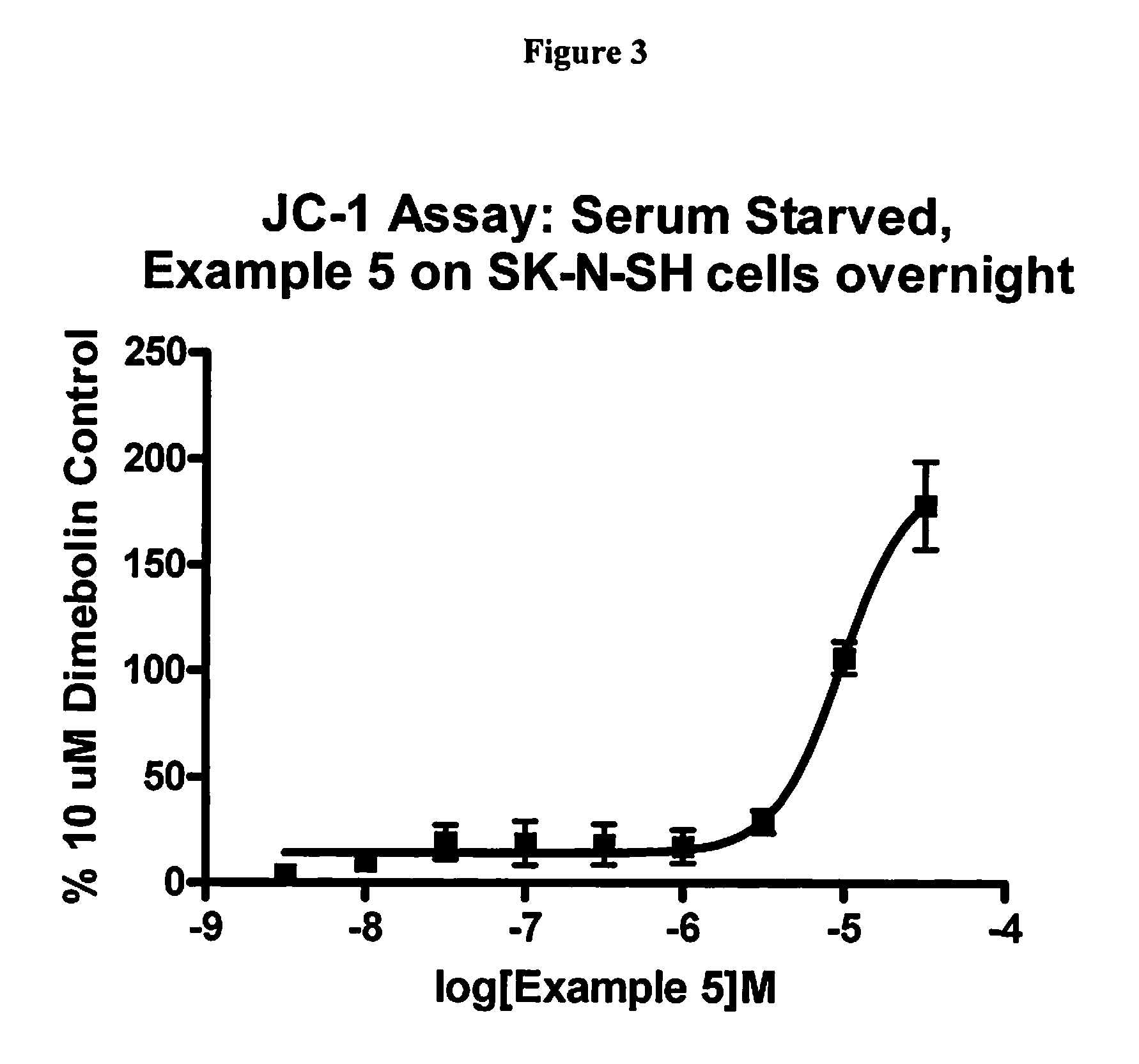Indole and indoline derivatives and methods of use thereof
a technology which is applied in the field of indole and indoline derivatives, can solve the problems of loss of memory and other intellectual abilities, and none of these hypotheses is sufficient to explain the diversity of biochemical and dosing regimen
- Summary
- Abstract
- Description
- Claims
- Application Information
AI Technical Summary
Benefits of technology
Problems solved by technology
Method used
Image
Examples
example 1
2,11-dimethyl-5-[2-(6-methylpyridin-3-yl)ethyl]-5,6,7,8,9,10-hexahydro-7,10-epiminocyclohepta[b]indole
example 1a
2,11-dimethyl-5,6,7,8,9,10-hexahydro-7,10-epiminocyclohepta[b]indole
[0557]In a 100 mL round-bottomed flask were combined p-tolylhydrazine hydrochloride (1.58 g, 10 mmol; Aldrich), 8-methyl-8-azabicyclo[3.2.1]octan-3-one (1.392 g, 10.00 mmol; Aldrich), and concentrated sulfuric acid (5 mL) in dioxane (50 mL). The reaction mixture was heated to 80° C. for 2.5 hours, then cooled to room temperature. The solvent was decanted, and the residue was dissolved in water (20 mL) and basified with solid potassium carbonate to pH ˜12. This solution was extracted with dichloromethane (3×50 mL), and the combined organic phases were dried over magnesium sulfate. After removing the solvent under vacuum, the resulting solid was recrystallized from ether to afford the title compound: 1H NMR (300 MHz, CDCl3) δ ppm 2.43 (s, 3H), 2.55 (s, 3H), 2.82 (m, 4H), 3.64 (s, 2H), 6.93 (d, J=7 Hz, 1H), 7.18-7.12 (m, 2H), 7.87 (br s, 1H); MS (DCI / NH3) m / z 201 (M+H)|.
example 1b
2,11-dimethyl-5-[2-(6-methylpyridin-3-yl)ethyl]-5,6,7,8,9,10-hexahydro-7,10-epiminocyclohepta[b]indole
[0558]A reaction flask with a septum cap was charged with 30% sodium metal dispersion in paraffin wax (0.14 g, 1.86 mmol; Aldrich) and a solution of 2,11-dimethyl-5,6,7,8,9,10-hexahydro-7,10-epiminocyclohepta[b]indole (0.30 g, 1.33 mmol; Example 1A) in dimethyl sulfoxide (2 mL). The vessel was sealed, flushed with nitrogen, and stirred for 10 minutes. A solution of 2-methyl-5-vinylpyridine (0.24 g, 1.99 mmol; prepared as described in International Publication No. WO 2001017968) and hydroquinone (0.036 g, 0.33 mmol, Aldrich) in anhydrous dimethyl sulfoxide (1.5 mL) was added and the reaction mixture was heated at 100° C. for 72 hours. After cooling the reaction mixture to room temperature, it was poured into water and extracted with ethyl acetate (4×25 mL). The combined organic extracts were washed with brine, concentrated, and purified by preparative HPLC [Waters XBridge™ C18 5 μm O...
PUM
| Property | Measurement | Unit |
|---|---|---|
| pH | aaaaa | aaaaa |
| volume | aaaaa | aaaaa |
| temperature | aaaaa | aaaaa |
Abstract
Description
Claims
Application Information
 Login to View More
Login to View More - R&D
- Intellectual Property
- Life Sciences
- Materials
- Tech Scout
- Unparalleled Data Quality
- Higher Quality Content
- 60% Fewer Hallucinations
Browse by: Latest US Patents, China's latest patents, Technical Efficacy Thesaurus, Application Domain, Technology Topic, Popular Technical Reports.
© 2025 PatSnap. All rights reserved.Legal|Privacy policy|Modern Slavery Act Transparency Statement|Sitemap|About US| Contact US: help@patsnap.com



